Off the back of a frantic London Fashion Week I attended Superhuman, an exhibition of work by the MA and MSc graduates of Ravensbourne, spanning the degrees Communication Design, Interactive Products Features, Fashion, Wearable Futures, Applied Technologies (rapid prototyping and digital technologies), Interactive Digital Media, Moving Image and Environment Design. The titles of these degrees alone fills me with wonder and optimism and gives anecdotal support to a claim I saw in a tangential teaser video by Future Hub, claiming that '40% of the top jobs in 2027 have not even been invented yet', suggesting that the old educational silos and linear career paths of the past will not fit the bill of the future. Step up Ravensbourne...
With the work of 29 graduates presented in a compact exhibition space it was a great deal to review and as such, my overview focuses on fashion and digital technologies.

Farid Bin Karim is the first student to graduate from the MSc Wearable Futures degree and has created a body of written work entitled "Couturier and the Art of Survival: a Technologist's Guide". This work is the result of Farid's ambitious attempt to explore the appetite within the 'closed-shop' of couture for current and future technologies.
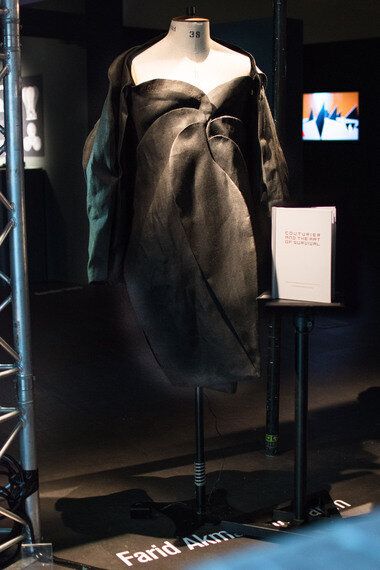

Farid Bin Karim's Couturier and the Art of Survival
His guide looks into the hypothetical future of the aesthetic embellishments of couture and the couturier in their struggle to remain relevant in an ever-changing and digital future. Farid seeks to explain how technology can aid in this endeavour and affect the human perception of adornment as a wearable. It is an exploration in updating crafts and disciplines to add dimensionality for wearables of the future.

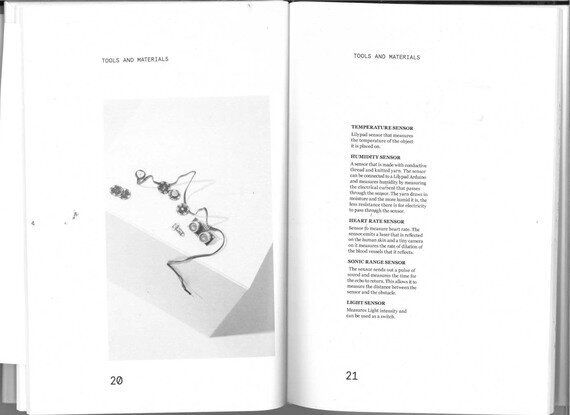
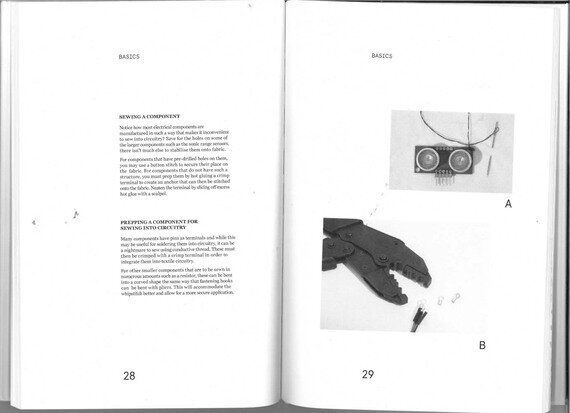

MSc Applied Technologies graduate Jason Taylor's project "The Bionic Toolkit" explores the idea of changing the way amputees interact with the design world by creating intuitive design tools. It begins from the basis that the human hand has shaped the way we use traditional tools to design, meaning that such design tools are difficult to use with a prosthetic limb, as these devices are not kinematically accurate.
Taylor began by deconstructing an MRI scan of his own arm to create a 3D digital model. This model then served as a template in which myoelectric sensors, servos, and microprocessors were inserted and arranged so as to preserve kinematic function. Using an open source robotic arm by InMoov (created by friend of Techstyler, Gael Langevin) for initial testing allowed Jason to explore how tools could be incorporated directly into the arm, reducing the need for sensors that would usually grip an existing tool.
Jason explained that "Rigorous testing has allowed me to explore the most efficient ways in which an amputee could draw, write, paint, sculpt etc... typically by attaching existing tools to each phalanx and recording the level of control, and ease of use. This allows for varying DOF's (degree's of freedom) depending upon the tool being used". "Using Ravensbourne's state of the art prototyping facilities has allowed me to 3D print many iterations of mechanisms and prototypes, using a combination of FDM and polyjet 3D printers, laser cutters and 3D CNC machines."
He plans to continue with the project now that he has graduated, and wishes to design more tools that amputees can attach to the Bionic Toolkit. "The next step would be to make my project open source, so that other designers can freely edit my designs, and improve the quality of lives of others."
At the time of going to print and within a couple of weeks of meeting Jason, he provided me with this update: "The Bionic arm now allows the user to not only draw, sculpt, paint etc., but also to interact with digital environments (great for 3D modelling, VR and AR), sculpt dense materials (acting as a dremel-like tool), and 3D print direct from the 'finger tips'. Actions and movements can now also be recorded and repeated for iterative designs - lots of improvements since we last spoke!" An impressive innovation rate by anyone's standards!



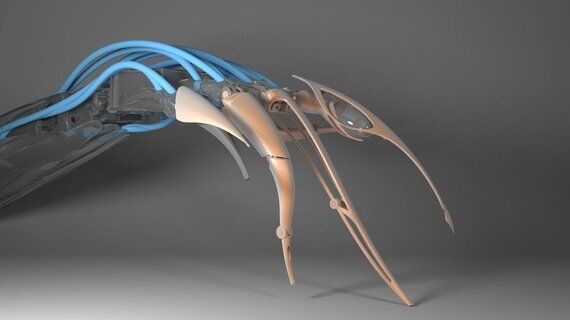
Bionic Toolkit Images: Jason Taylor
Siyue "Lulu" Xu's designs propose that denim's prevalent, cheap, fast fashion reputation can be reshaped by elevating denim design through craft. The collection challenges the perceptions of environment-friendly fashion design and aims to show that smart design can both be aesthetically sleek and pleasing and at the same time reduce the rate of pollution from industrial manufacturing in a post-humanist future.

Lulu prints, embroiders and enhances new and second-hand denim fabrics and garments, transforming them from ubiquitous items into rare collectibles. Her re-worked denim seeks to challenge the polluting reputation that denim carries and is inspired by rebellion and anarchy, taking its manifesto from punk and 1980's western club culture. For more of Lulu's work check out her collection book and Instagram antics.

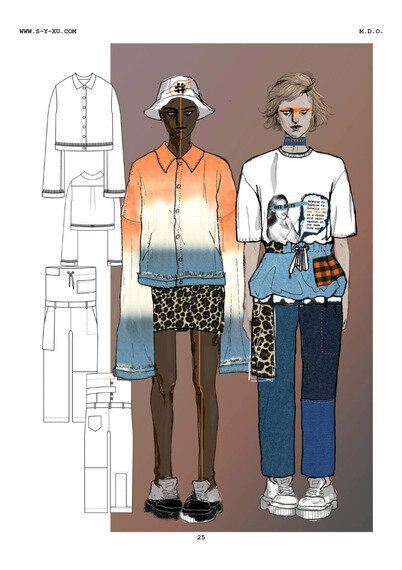
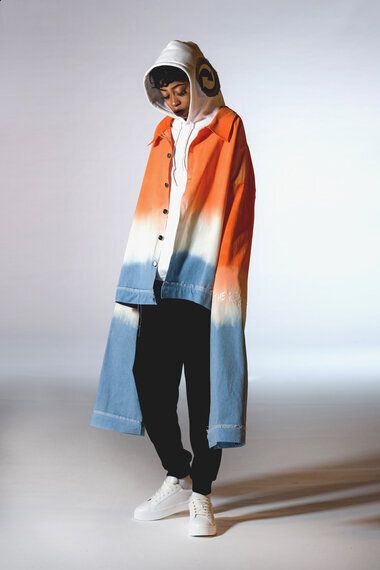
Siyue 'Lulu' Xu's design, development and realisation
Zoe Alexandria Paton Burt's work in progress is "Neither/Nor" (she is due to graduate from the MA fashion degree next year) and looks into the gender divide in clothing and how it perpetuates inequality amongst different genders. She is seeking to highlight modern day use of language that is ingrained in western society that she feels undermines individual behavioural traits, expecting men to behave in 'masculine' and women in a 'feminine' ways.
Zoe's collection synopsis goes on to explain that "the collection will encompass the use of 3D modelling and printing, textile manipulation, embroidery, a broad range of fabrics from the traditional to the techno". The final outcomes will be a collection, fashion film and a documentary aiming to raise awareness of the fight for equality.
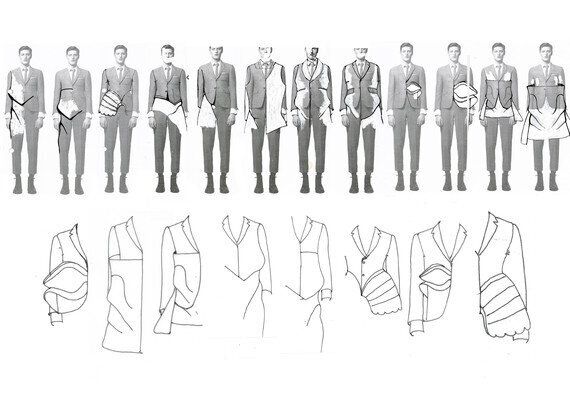
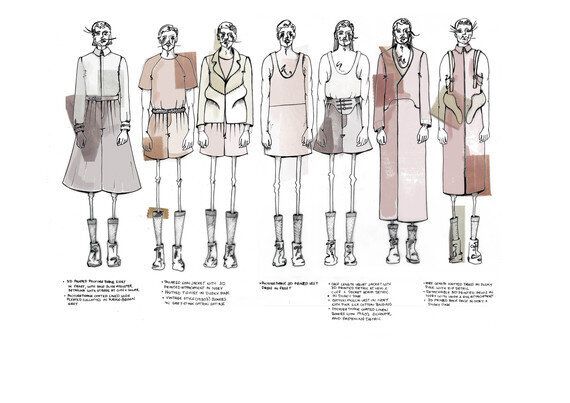
The garments presented by Zoe under the name "Alexandria Paton" contain components that have been 3D scanned and modelled using Rhino, then realised with large format 3D printing. Zoe is also experimenting with 3D printing directly onto fabric using the Ultimaker 2 and Faberdashery PLA. She prints on to both Velvet and PolyUrethane fabrics and plans to further experiment with 3D modelling and printing, incorporating traditional textile techniques to create a new and unique amalgamations of the two.
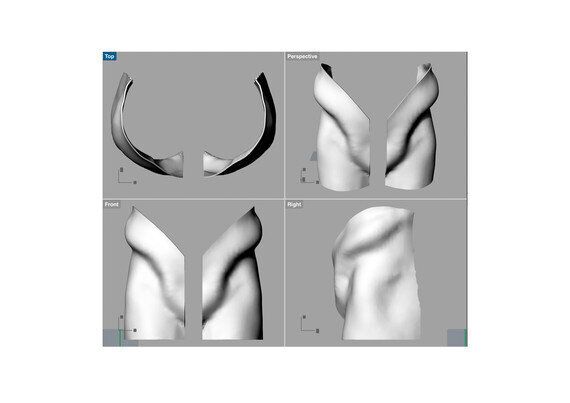
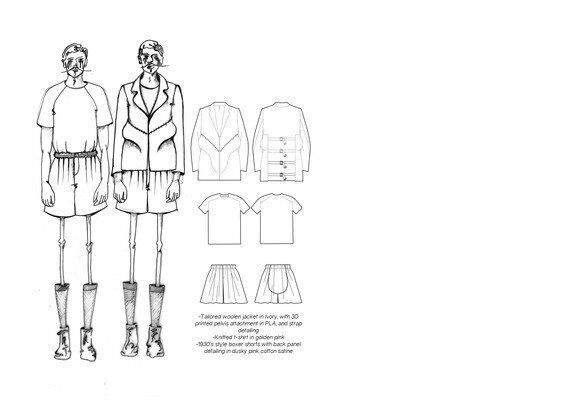

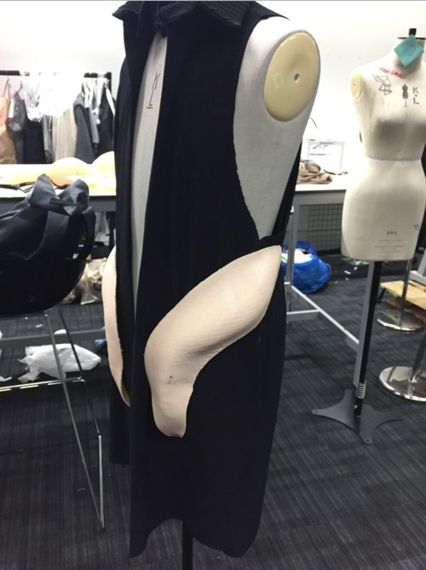
Zoe Burt's garment prototyping, MA Fashion Degree in progress
For more information on the Ravensbourne MA/MSc graduate show visit superhuman2016.uk
More information on Ravensbourne courses can be found here
First published on Techstyler.fashion
Follow Techstyler on Instagram
